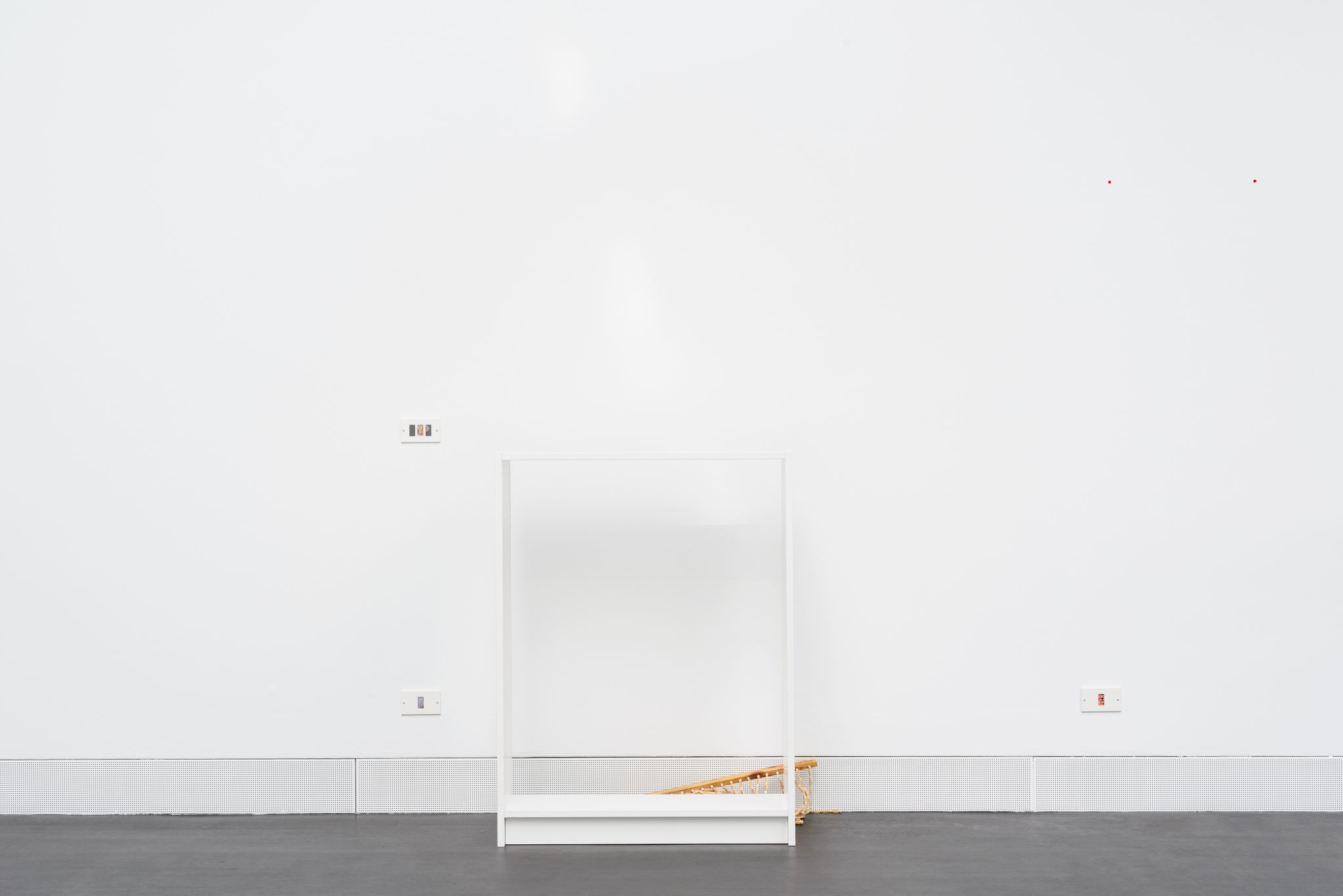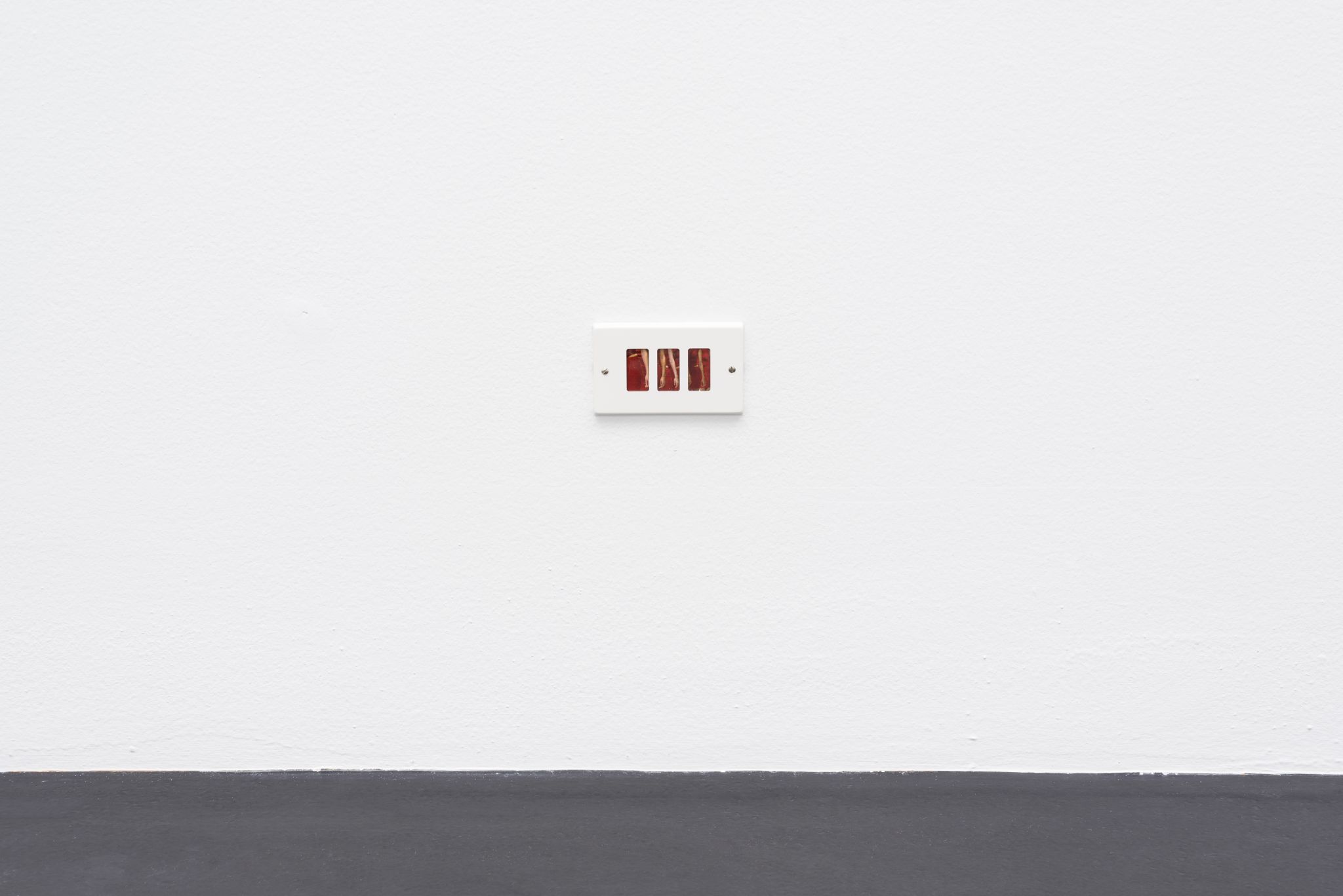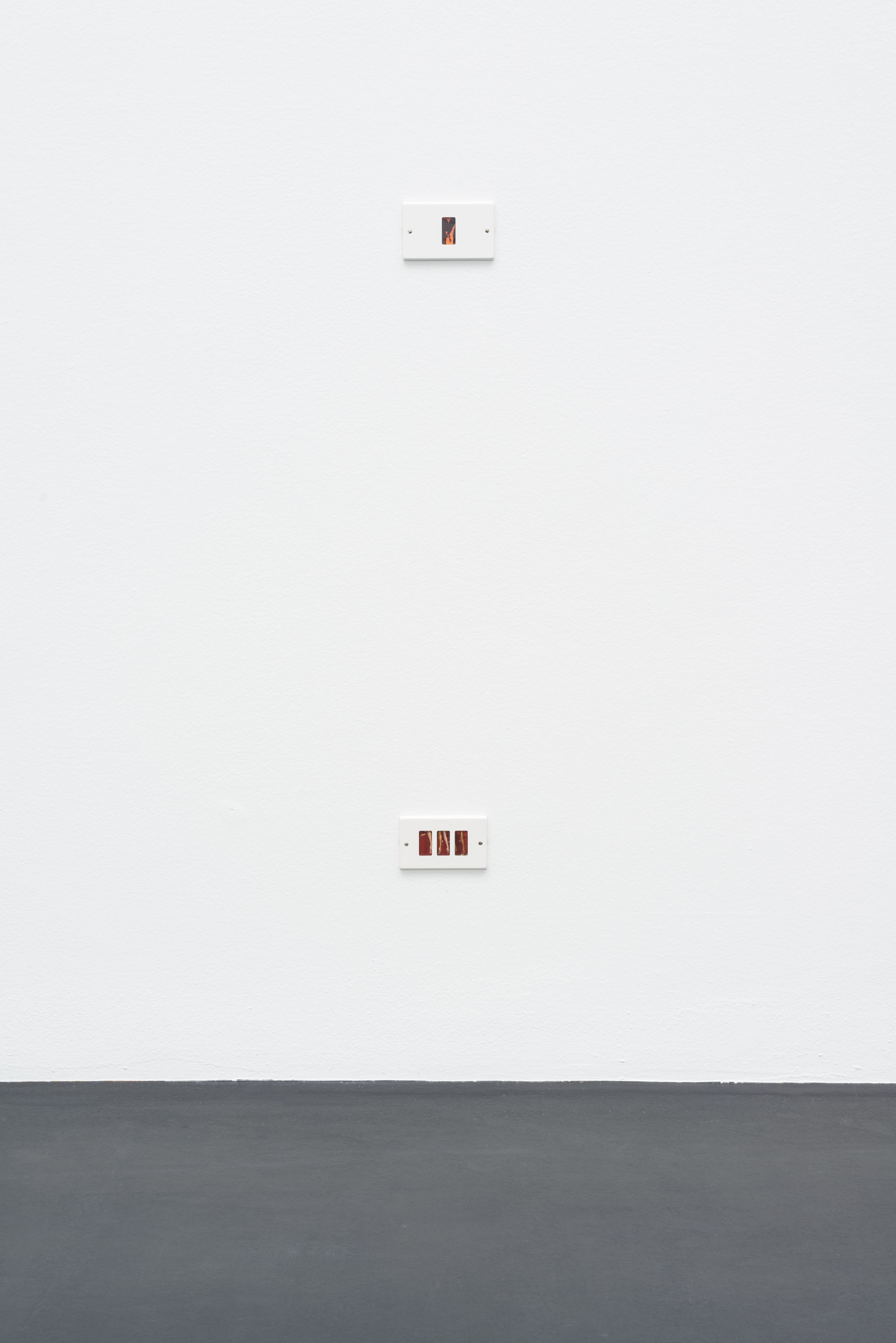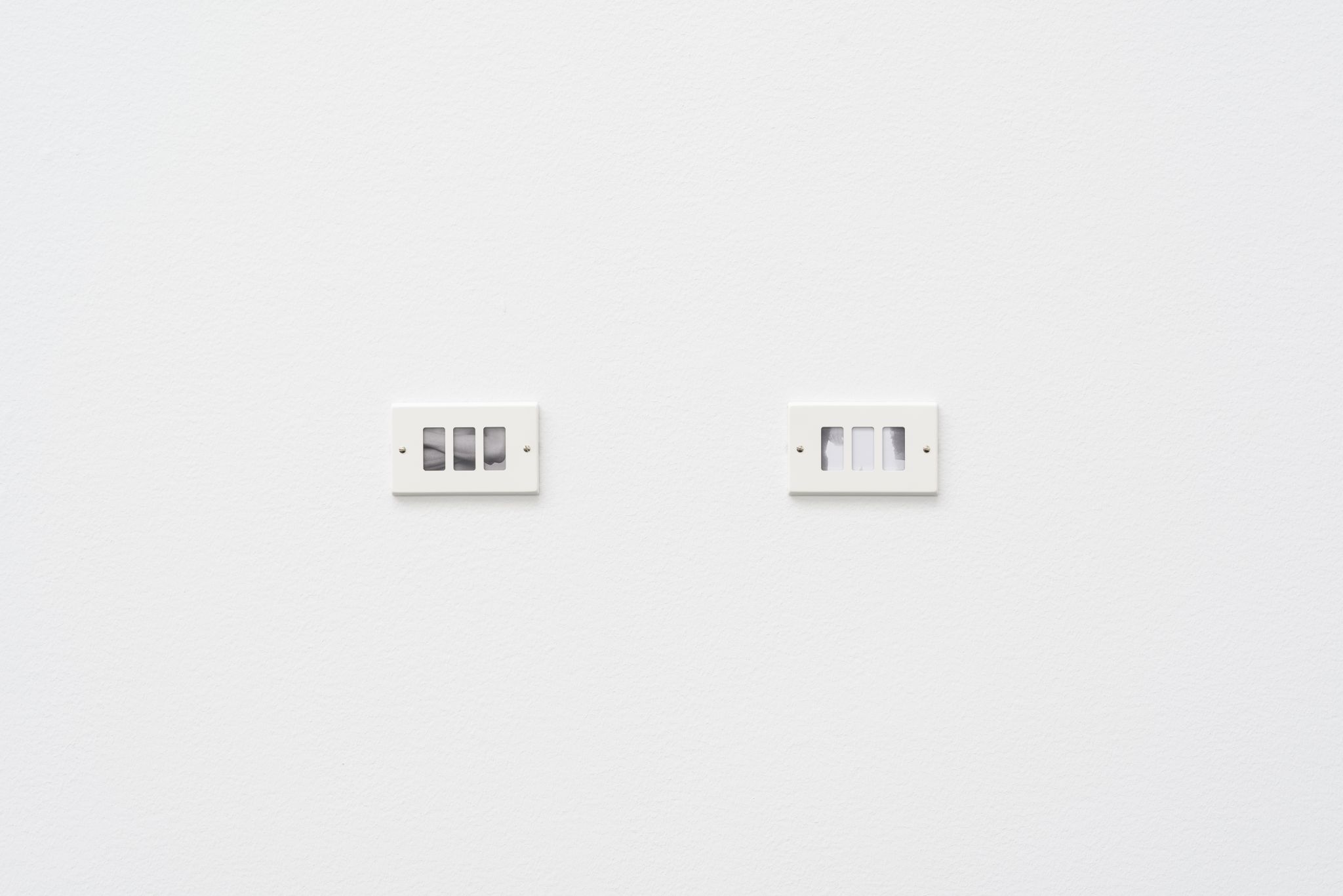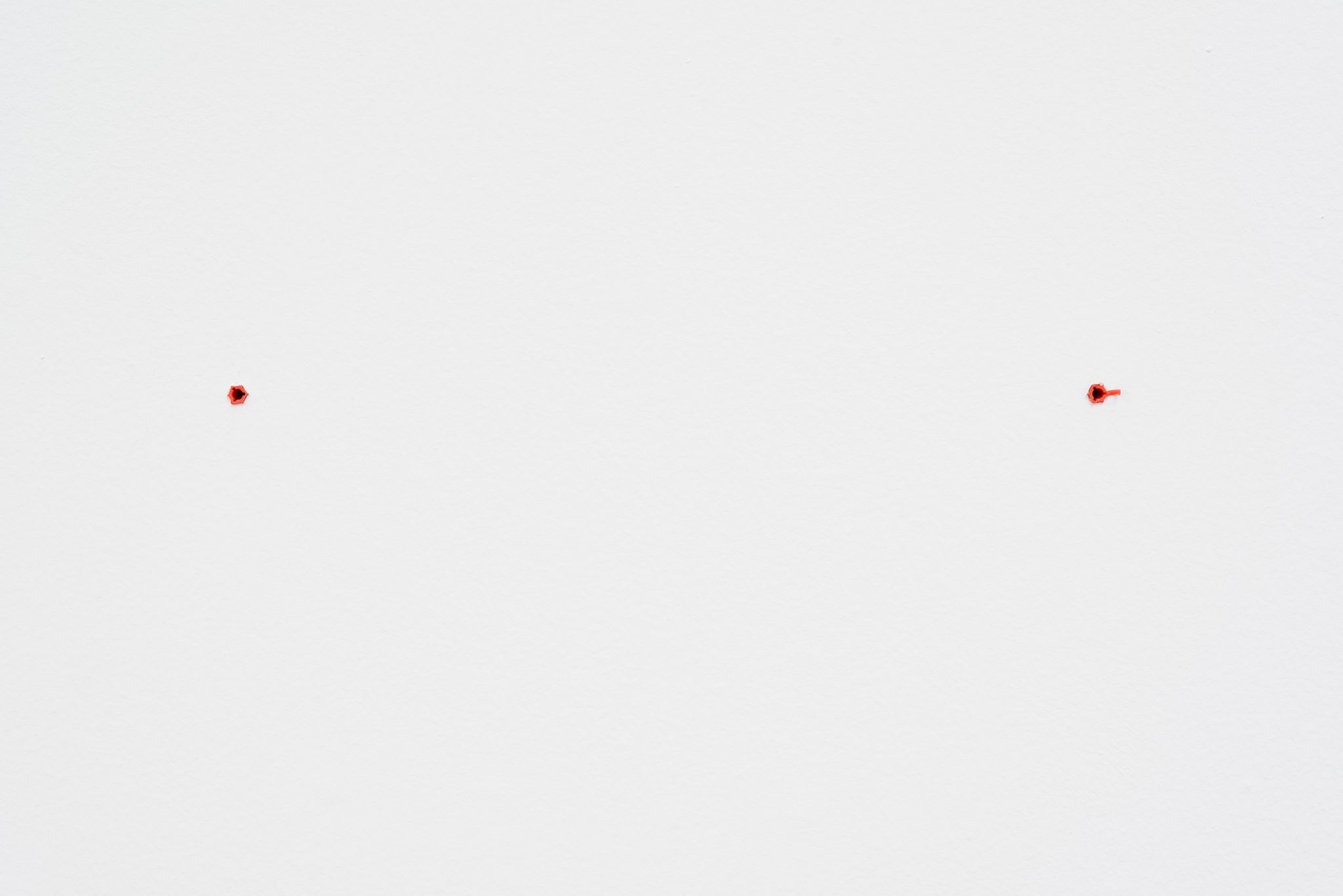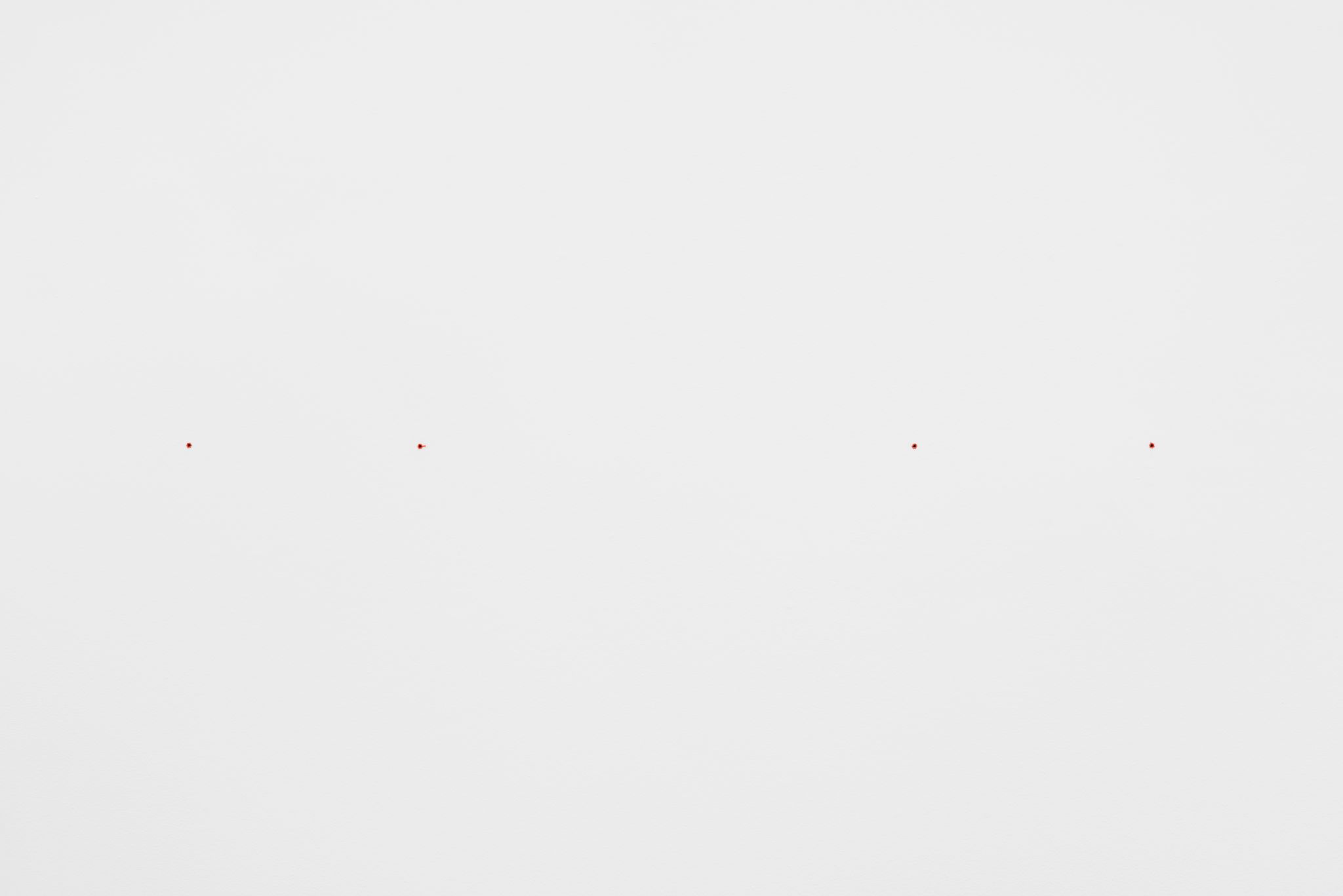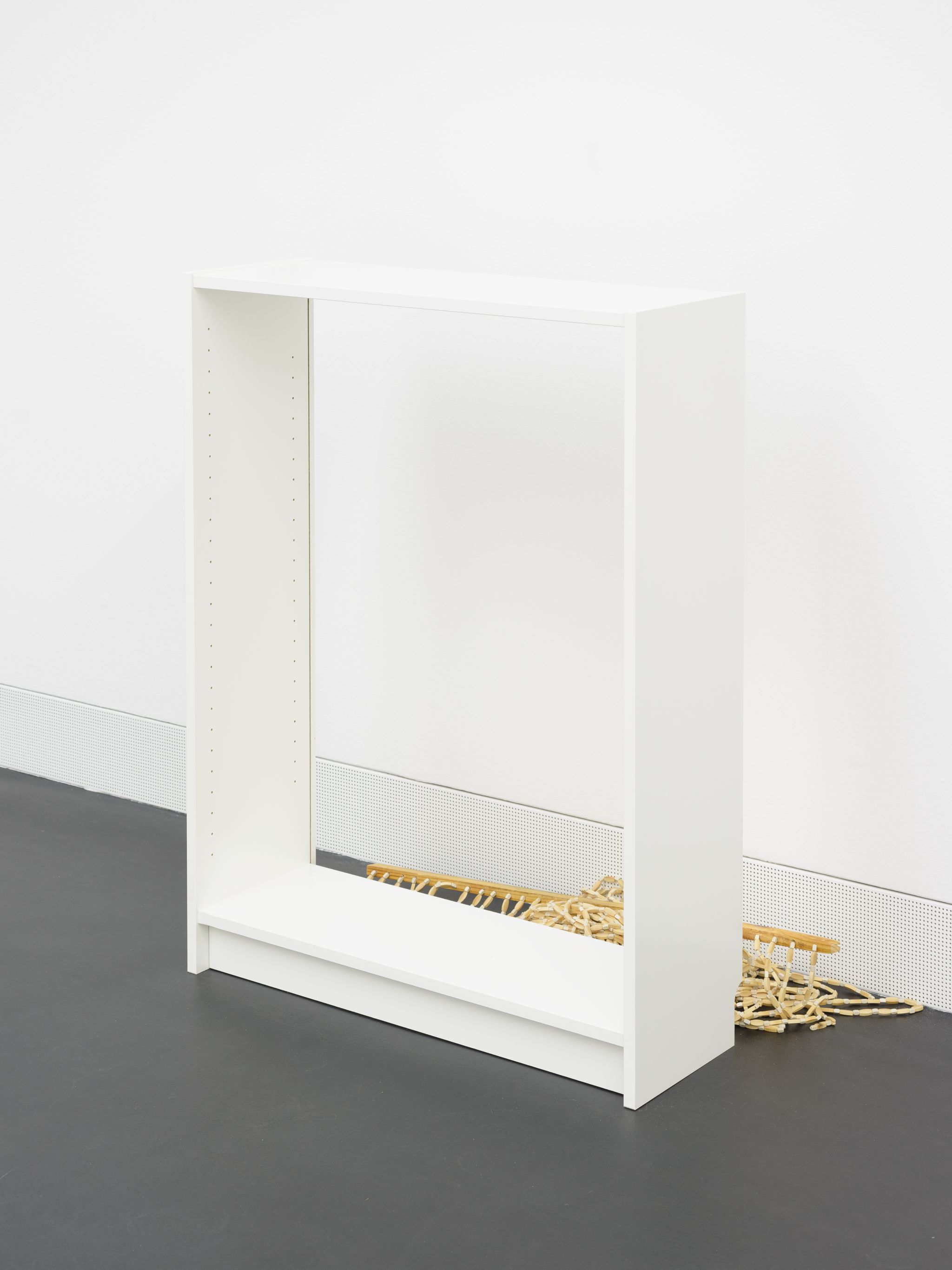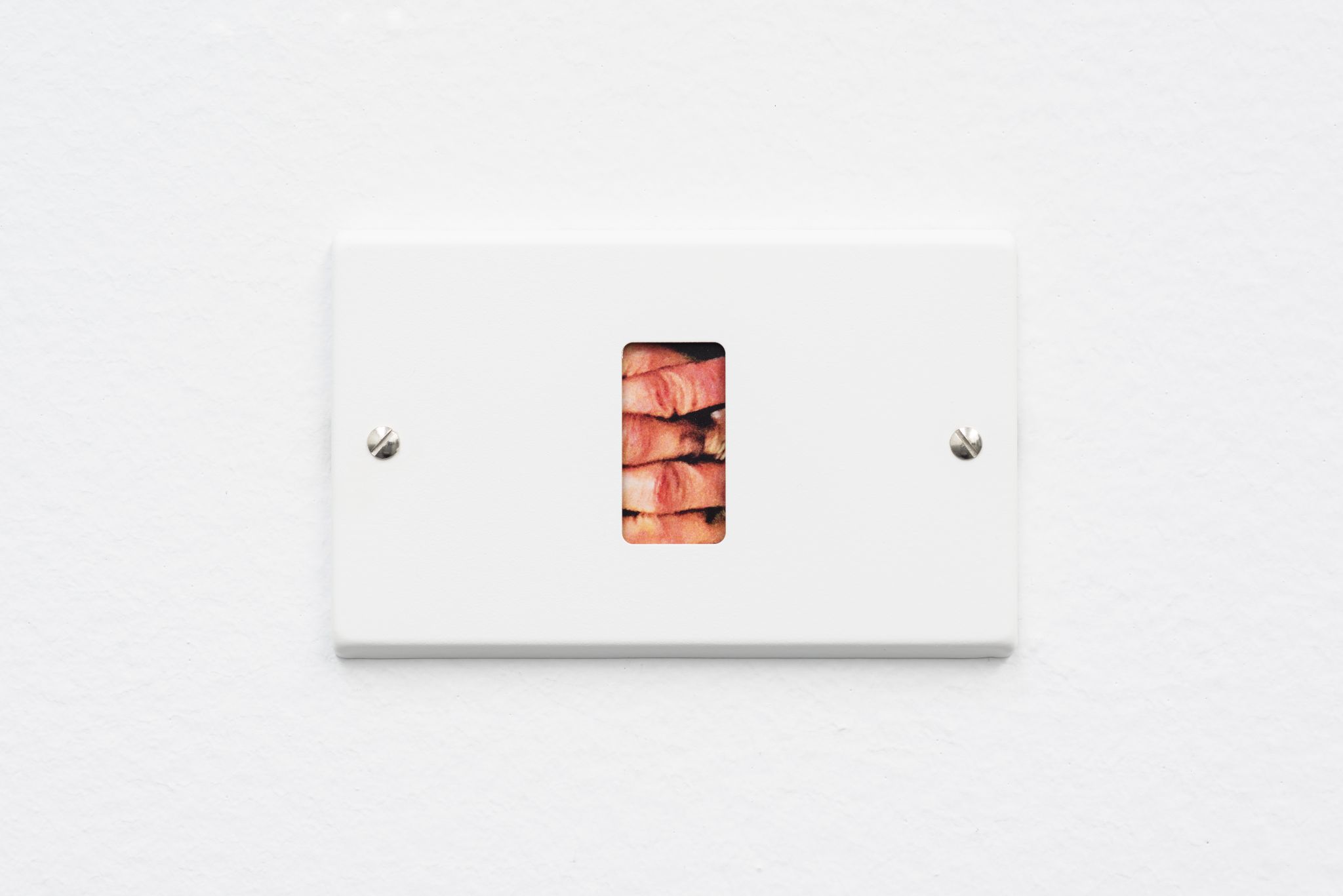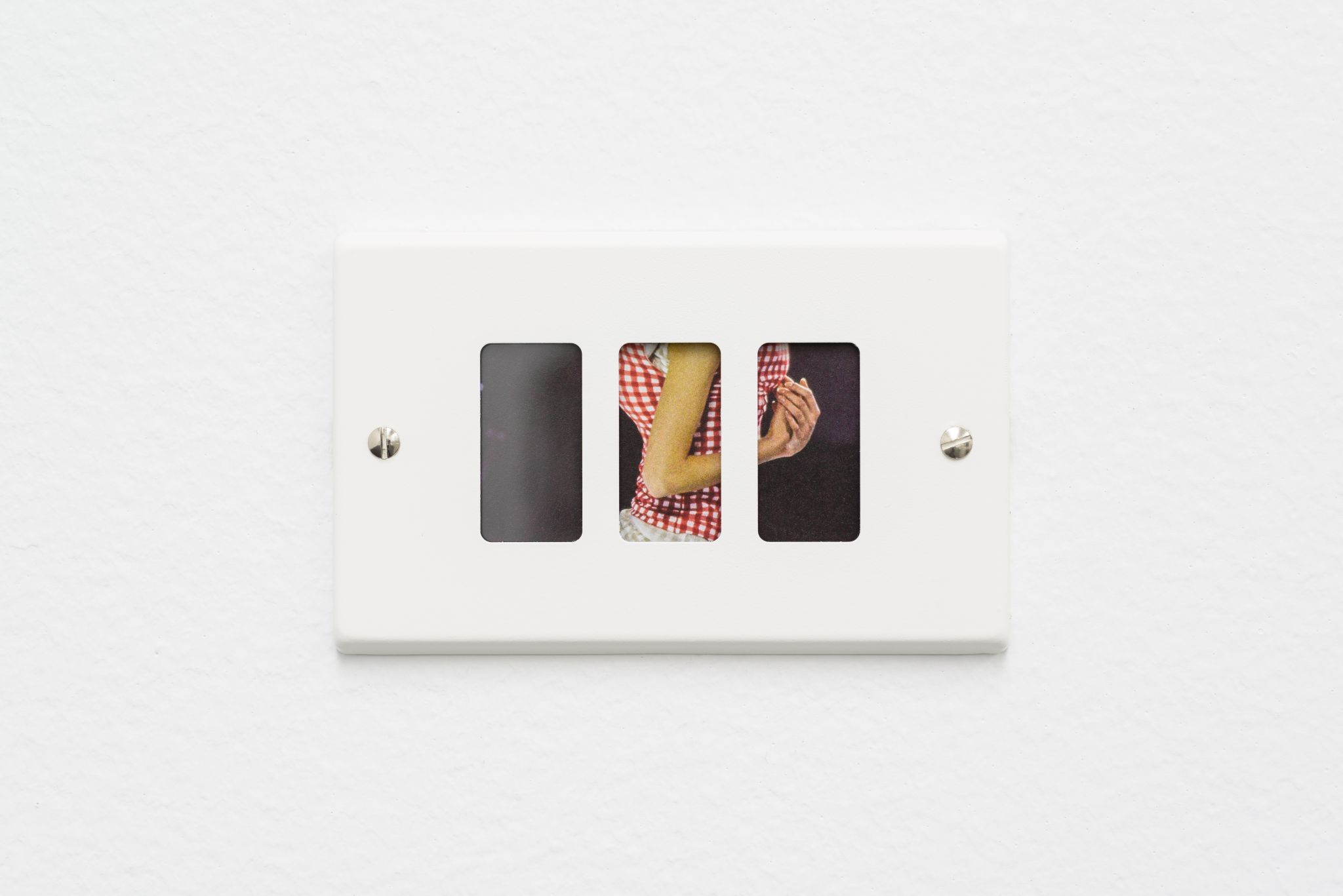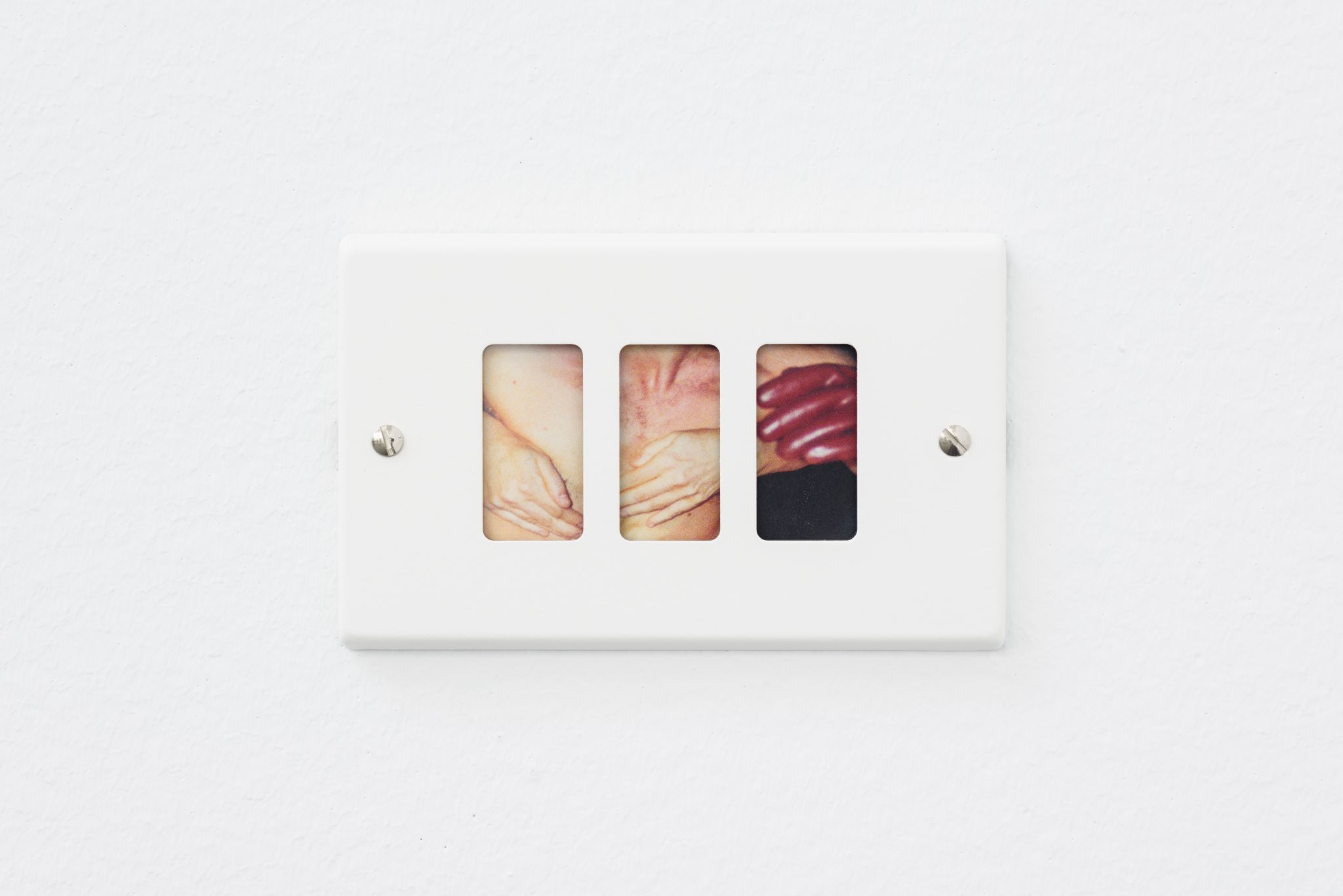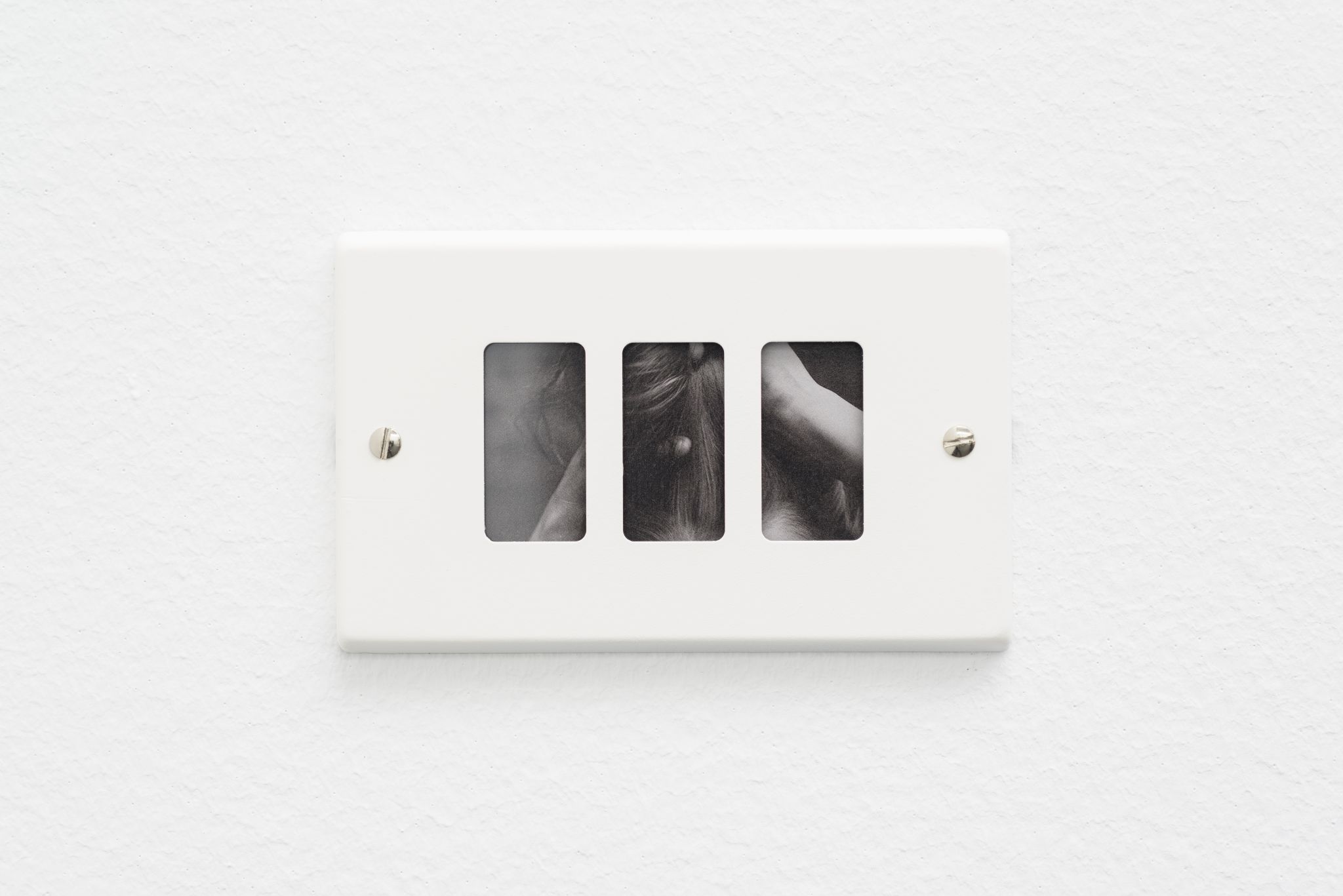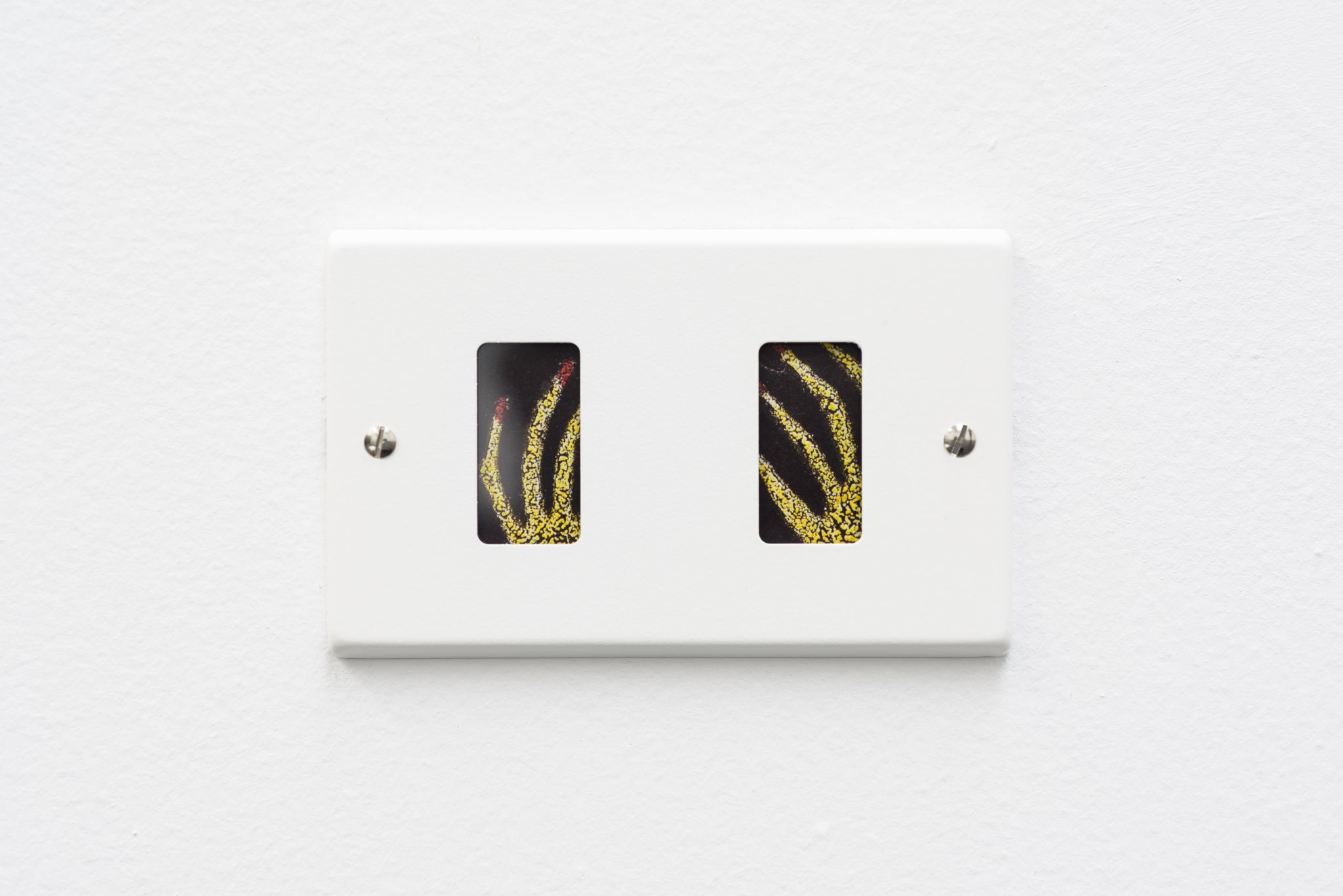-
Anna Franceschini: Your title reminds me of a message left to a stranger, an instruction. Is it intended to be functional?
read more
Davide Stucchi: Yes, the title waits to be activated. Like a light bulb connected to the light switch, which sits in a room waiting for a remote control. The switches ask for a presence, a body moving between the domestic environment.
A: Turn me on, turn me on, says the blind bulb...D: Desiring to be lit...
A: Yes, but also not understanding the power which it already carries inside itself, the power of a thing, the potential of thinginess. What about the life behind/inside a switch? Is that an electric body?
D: Have you read “The Power” by Naomi Alderman? It sits on my bedside table for a while now. On the cover is a red background with a hand made by electric flows. A friend recommended it to me, because it has an interest- ing point of view on body awareness. Basically, its central premise is women developing the ability to release electrical jolts from their fingers, thus leading them to become the dominant gender. I am not saying that you can get a shock if you touch my switch... still, be careful!
A: Glad you said that! Inside the light switches I see hands arranging hair; can they turn on the kitchen lights while doing that?
D: You make me laugh, because I imagine you switching on the lights with your nose while arranging your hair! Often you make fun of me, because I rearrange common phrases or formulas, maybe here, too it is not about the gesture, but the interference while transmitting them?
A: Where do the images come from?
D: I ripped these images flipping through books, magazines and catalogues of my library. Actually, it’s not 100% mine, since I have to somehow agree with my ex-partner on how to use the library together, or how we will divide it. It’s weird how this idea manifested, it was just a joke I made while me and some friends were at a bar talking about revenge on our ex-boyfriends.
A: Does he know about these ripped pages?
D: Now that we talked about it, yes. I trust art as an infrathin language and he does, too. So he somehow knows it, I guess!
A: Instead of gently touching a flat smooth and anonymous surface, your switches invite one to put your fingers deep inside the electric, beyond which is filled up with gestures...
D: These movements I chose has been directed, they belong to models, performers, actors. Bodies that have been guided, asked or chosen. More and more often on (theatre, fashion, movie) sets you find the figure of the “movement director”, a person who specialises in movements, interested in body and physicality. Someone able to create a movement-scape, and look after the actors, which are like the instrument who carry the move- ment. We love to direct objects, don’t we?
A: Objects invite one to direction, while kindly but assertively obtaining the action they require. Is that what we call feticism? Are we objectifying performers when asking to do such and such a posture or movement on a set? Are we abusing a door when we ask the actress to open it one hundred times to find the perfect choreog- raphy for the drama we want to stage? What about that glass full of gin tonic thrown against the wall? And the window that crashes against the body of the fugitive? Are objects a majority treated as a minority?
D: This question is so subtle and relevant. It really pushes me in a corner. I try to concentrate by isolating myself from the outside and look straight to the digits of my computer, then my hands move to write my actions. When are we free or more easily apt to consider them as a majority? Looks like where you use them the most you free them the better, like theatre, cinema, asvertising, commercial, art? You and me have sometimes felt like being in a landscape where we want to serve objects as artists.
A: Minimalist intimacy, monumental solitudes that are episodically switched on by a scroll on a flat enlighted surface. What is it about domestic sentimentality?
D: I love to interrogate domesticity. There is so much work about queer space that always deals with exterior- ity, a cruising urbanity, publicness as transgressive act... So much of queer life happens at home – bourgeouis relationships, hiding from public, simulating the heteros... Very IKEA!
A: You refllect on IKEA minimalism while casting a Dada spell on it. What is the result? Animation of the inani- mate? For example “La Linea” by Osvaldo Cavandoli?
D: I wish you were here, I would have let you step on the doormat and enter by the Donald Juddish-bookcase. You can see this intervention in space as a critique on minimalism, or more in the realm of what you suggested as a comic strip, or as a frame, a tv screen. I love “La Linea”, its obstacle, its difficult relationship with the hand of the cartoonist and its gibberish language. If you look at ankles height in the space, there are also “plugs” you can put chargers in. Other lines. And behind another bookcase hides a fallen curtain - or are all the lines drawn by Cavandoli?
A: I wish I woule be there, too. I wish I was a line and you could direct me in the empty, senseless space. I wish I was the hanger and the joint, the fisher and the switch. I wish I will always will be the gentle tool to play with and will make you feel at home.
D: Which tool?
Wednesday – Friday 12 – 6 pm
Saturday 12 – 4 pm and by appointment
Davide Stucchi – ‘Light switch (Entrance)’
Galerie Gregor Staiger, Zurich, CH
23.11.19 – 25.01.20
-
Anna Franceschini: Your title reminds me of a message left to a stranger, an instruction. Is it intended to be functional?
read more
Davide Stucchi: Yes, the title waits to be activated. Like a light bulb connected to the light switch, which sits in a room waiting for a remote control. The switches ask for a presence, a body moving between the domestic environment.
A: Turn me on, turn me on, says the blind bulb...


